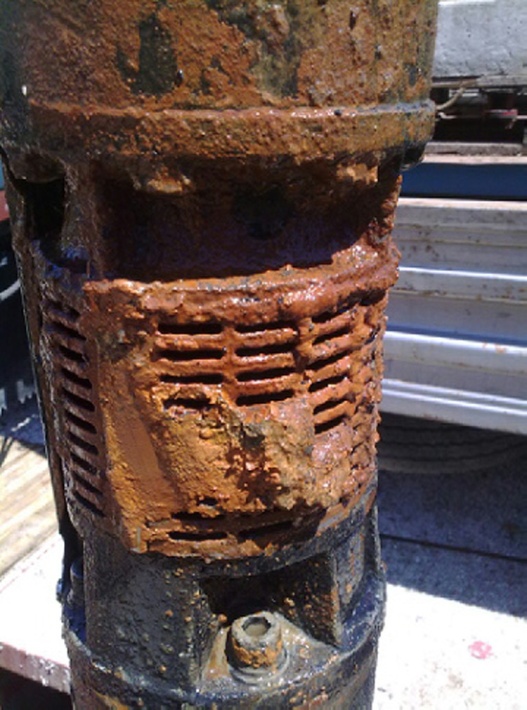Groundwater Management in Geothermal Systems
by Mike Deed, Geoquip Water Solutions
Major problems can arise in the collection field of an open loop GSHP system with bacterial growth and iron oxide debris or sludge. Iron is one of the most common elements found in nature, accounts for at least 5% of the earth's crust and most groundwater contains a concentration of dissolved iron. Whether caused by bacterial activity, drilling, or through chemical reactions, these residues will eventually affect nearly everyone who sources water from aquifers.
GSHP systems can grind to a halt within a few months if contaminated with bacterial growth or iron oxide. Bacteria and associated residues can build up inside the heat exchanger, clog both the abstraction and recharge wells and increase the friction losses in the flow section of the system. This reduces output, wastes energy, increases operating costs and can compromise the original reason for opting for geothermal energy.
Geoquip Water Solutions has achieved considerable success in implementing maintenance programmes for geothermal applications and has developed them across all water supply applications for the last ten years. Incorporating the BoreSaver range of treatments, the objective of its programme is to return well production as close to the original drilled capacity as possible and to help maintain a continuous, problem-free water supply.
Boresaver was developed in the early 2000s and is now exported to more than 14 countries. It is approved for use in potable water applications by the Secretary of State in the UK and the NSF in America.
Geoquip's maintenance programme for GSHP systems includes a downhole survey using a portable Laval video inspection system, an analysis of the survey and the available water quality data, a purpose built rehabilitation rig and BoreSaver. BoreSaver's low environmental impact makes it an attractive solution for individuals and organisations intent on maintaining their responsibilities to the wider public.
Lodi Case Study
In 2009 a geothermal plant was installed to service an air conditioning system for the Lodi District Council offices in Italy. The system was designed with an overall thermal power of 0.6MW, achieved by one heat pump with plate heat exchangers, a 42m deep abstraction well, a 29m deep recharge well and 100m of pipework. The system soon ran into problems as iron oxide residues from iron bacteria blocked the recharge well and caused flooding: the system had to be switched off for rehabilitation. Despite the installation of a second screen and treatment with hydrochloric acid, the blockages remained and the flooding continued.
Ground source energy specialists were consulted and a downhole video inspection of the system showed that both wells were completely clogged with iron bacteria and iron oxide residues. The slots in the screens in the recharge well were completely sealed, preventing the discharge of purged water into the ground. BoreSaver was used to treat the system and a post-treatment video inspection revealed that the screen slots were virtually clear of contamination and the system worked efficiently through the summer without subsequent borehole clogging.
However, towards the end of 2010, levels in the recharge well were once more increasing and it was evident that on-going maintenance was needed to control the iron bacteria contamination. BoreSaver was used in early 2011 and the system was returned to full operational use. A regular maintenance programme is now part of the Lodi geothermal management plan.
Effective Solutions are available
Whilst BoreSaver played a crucial part in the rehabilitation process at Lodi, it is clear that an effective monitoring and maintenance programme was also needed. For organisations where there is a need for continual flow to maintain operations, limiting bore and pump maintenance to a breakdown only basis can have huge financial implications. Regular, maintenance can maintain capacity and it is now becoming common to build in such a programme at the design stage rather than waiting until operations commence and a problem occurs.


